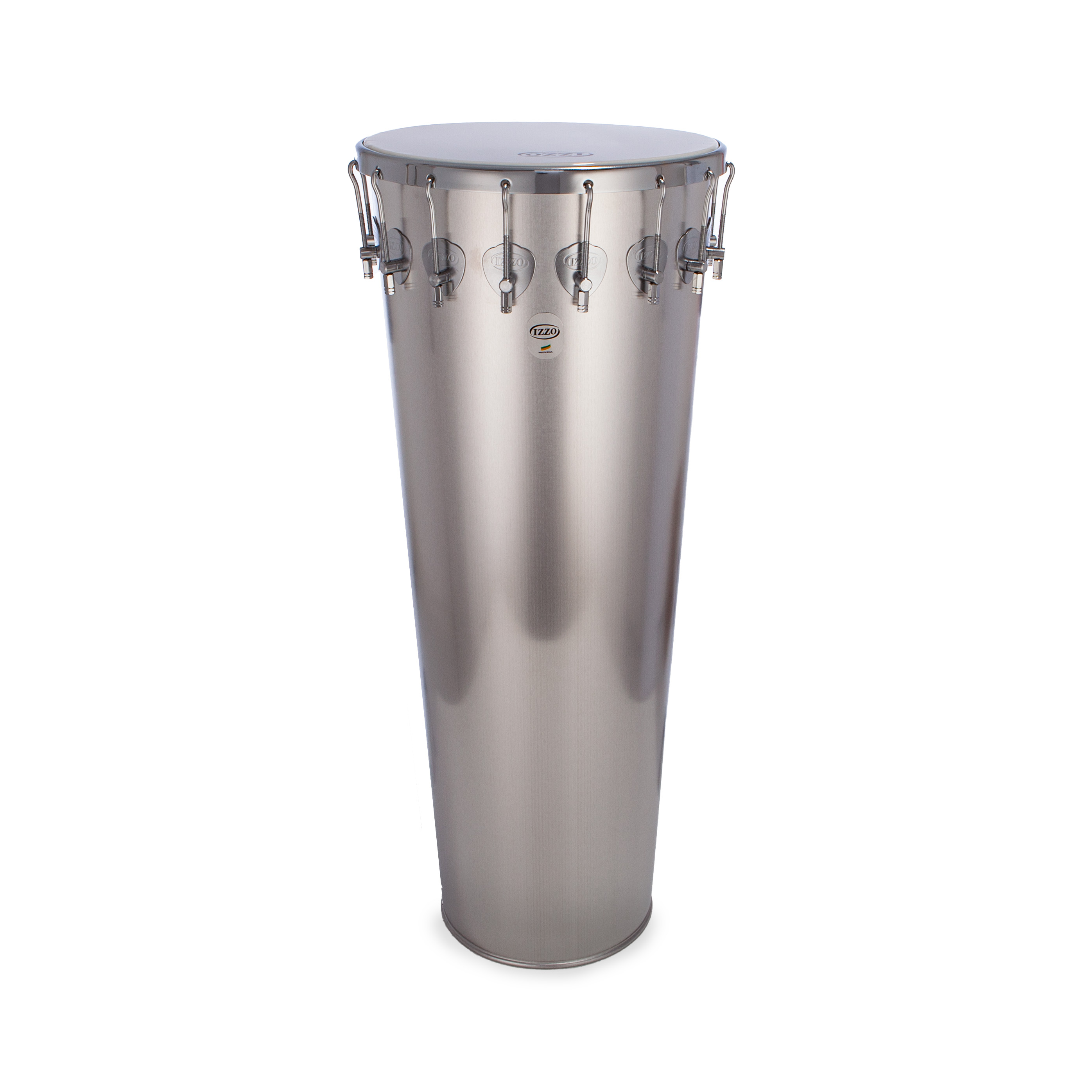

Contrary to the opinion of many percussionists in Europe, in Salvador the timbal is not a typical instrument in samba reggae or in the drum groups of the Blocos Afro. Either the timbal is completely absent or it is only used for a short time during stage performances: here and there to accompany a vocal intro, here and there in a break in a question-and-answer game with the bateria, and that's it. In Europe, on the other hand, the timbal is often used across styles within a group. Samba-reggae grooves, like ilê aiyê rhythms, are often spiced up with the sharp sounds of the timbal .
The timbal was popularised by Carlinhos Brown and his group Timbalada. With this group, the name of the instrument says it all: Timbal ada. The ending -ada is used in Portuguese to emphasise that there is a lot of something. And there are a lot of timbals in Timbalada. During timbalada street parades, there are often several rows of timbaleiros in front of the bateria, which have a decisive influence on the overall sound.
Occasional light oiling of the threads on the tensioning hooks will keep the nuts moving smoothly. Relaxing the head after playing will prevent the shell from warping.
Starting with the axé bands from Bahia, an extremely high tuning of the timbal has become more and more popular. In the past, 6 tension hooks were standard, but nowadays you often find timbales with 8, 10 and 16 tension hooks. In this way, the great force generated by a high skin tuning and exerted on the shell is evenly distributed.
It is best to tune the drum 'crosswise'. This means that you start by changing the tuning on one tensioning hook, then move to the opposite tensioning hook to loosen or tighten the nut. Then you put the wrench on the next hook, and so on, until you have reached the desired pitch. If you place a hand in the middle of the head and strike the head with a stick close to the tensioning hook, you will hear the sound the head makes at that point. This allows you to check the pitch at each hook. The aim is to have the same pitch at each hook.
Using a spanner with a ratchet function makes tuning easier.
The timbal is carried with a shoulder strap. The open hooks used in Brazil allow the instrument to be put on and taken off quickly. A more relaxed playing position can be achieved by attaching a metal ring to the tensioning hook, into which the hook can be hooked. A more comfortable alternative is to use straps that cross over both shoulders like braces. This distributes the weight of the timbal evenly over both shoulders.
A standard 175 micron plastic head produces a sound rich in overtones with sharp slaps and a nice bass. A thicker 250 micron head produces more open tones and a more balanced bass/open/slaps ratio. With the new type of underside coated heads you get a short sustain and warm open tones.
Timbals

Average rating of 4.8 out of 5 stars

Average rating of 0 out of 5 stars

Average rating of 0 out of 5 stars

Average rating of 0 out of 5 stars

Average rating of 0 out of 5 stars

Average rating of 0 out of 5 stars

Average rating of 0 out of 5 stars

Average rating of 0 out of 5 stars

Average rating of 0 out of 5 stars

Average rating of 0 out of 5 stars

Average rating of 5 out of 5 stars

Average rating of 0 out of 5 stars

Average rating of 5 out of 5 stars

Average rating of 5 out of 5 stars

Average rating of 0 out of 5 stars

Average rating of 0 out of 5 stars

Average rating of 0 out of 5 stars

Average rating of 0 out of 5 stars

Average rating of 0 out of 5 stars

Average rating of 5 out of 5 stars
Timbals

Average rating of 5 out of 5 stars

Average rating of 0 out of 5 stars

Average rating of 5 out of 5 stars

Average rating of 0 out of 5 stars

Average rating of 0 out of 5 stars

Average rating of 0 out of 5 stars

Average rating of 0 out of 5 stars

Average rating of 0 out of 5 stars

Average rating of 5 out of 5 stars

Average rating of 5 out of 5 stars

Average rating of 0 out of 5 stars

Average rating of 4.8 out of 5 stars

Average rating of 0 out of 5 stars

Average rating of 0 out of 5 stars

Average rating of 0 out of 5 stars

Average rating of 0 out of 5 stars

Average rating of 0 out of 5 stars

Average rating of 0 out of 5 stars

Average rating of 0 out of 5 stars

Average rating of 0 out of 5 stars